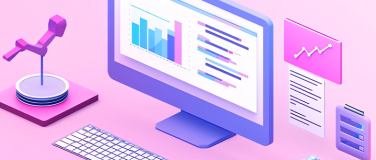Integration Platform-as-a-Service (iPaaS) is a solution to help organizations meet business goals by connecting their data. But it’s not a catch-all solution, and it’s insufficient to rely on for long-term business growth.
Most organizations have adopted API management and automation solutions in addition to iPaaS that leverage APIs and (un)attended bots. They know that to empower business teams and help future-proof organizations, reduce costs, and accelerate teams in the long run, a multi-solution focus must be used.
Using a combination of integration, automation, and universal API management solutions sets organizations up for success. This approach allows them to deliver on initiatives across the organization while providing them with the agility and advantages needed to meet increasing customer expectations in the digital-first age.
Benefits of iPaaS
Adopting an iPaaS is a significant first step to unlocking your data to create customer experiences that exceed expectations. The right PaaS should help your business achieve two objectives:
- It should address your organization’s integration challenges across a wide range of applications and data infrastructures in a single, unified platform.
- It should scale along with your business as it grows.
How business automation unlocks innovation
Empowering business teams to self-serve allows organizations to close their IT delivery gaps. MuleSoft Composer is a no-code solution that enables business teams to create integrations through clicks, not code. As a result, Composer allows business teams to innovate within their organizations by connecting systems and data quicker.
Business teams also often perform tasks that can be repetitive and require manual labor. RPA is a business automation solution that automates these repetitive tasks with bots. This can be applied to any system with a UI — even legacy systems. RPA supports business teams with four benefits:
- Automating data entry in legacy systems.
- Extracting data from documents, web pages, PDFs, emails, and more.
- Recognizing and extracting texts from images and screens.
- Automating multi-step workflows like copying and pasting data, validating data inputs, and sending notifications.
While typical RPA solutions focus on task automation, organizations are now looking for an RPA solution that fully supports multi-step workflows and processes — one that can work alongside your iPaaS and API management solutions.
Your digital architecture should be powered by an agile integration solution, a versatile universal API management platform, and an automation solution that enables business teams to take part in innovation. Relying solely on iPaaS as a catch-all solution forces organizations and IT teams to rely on a singular tool when you need a complete toolbox with a selection of tools fit for the right job.
This post only covers a few key points for creating a future-proof digital architecture. Read our brand new whitepaper, Go beyond iPaas, to learn how a combination approach using iPaaS, API management, and automation solutions can enable your entire organization to innovate quickly.









